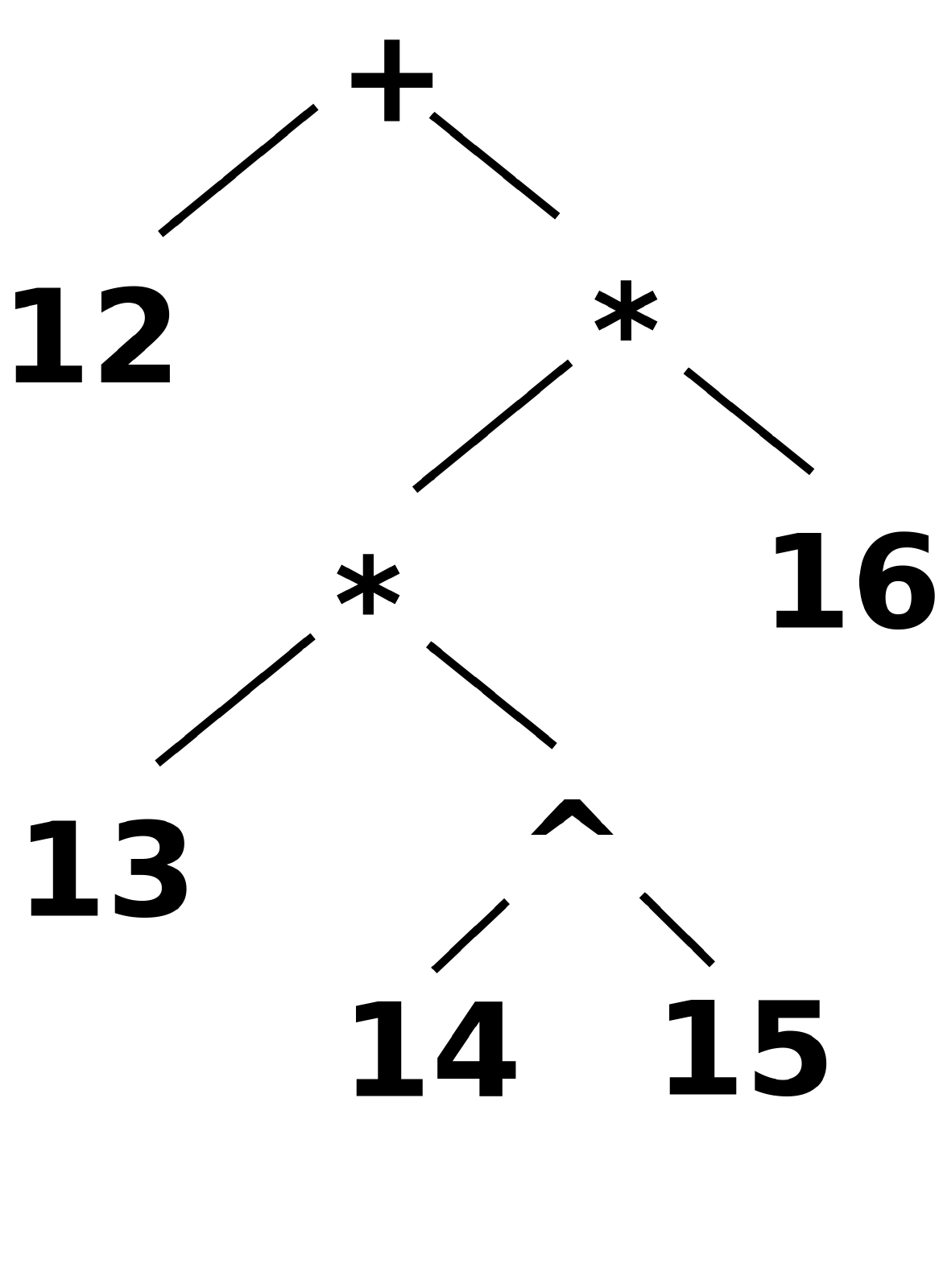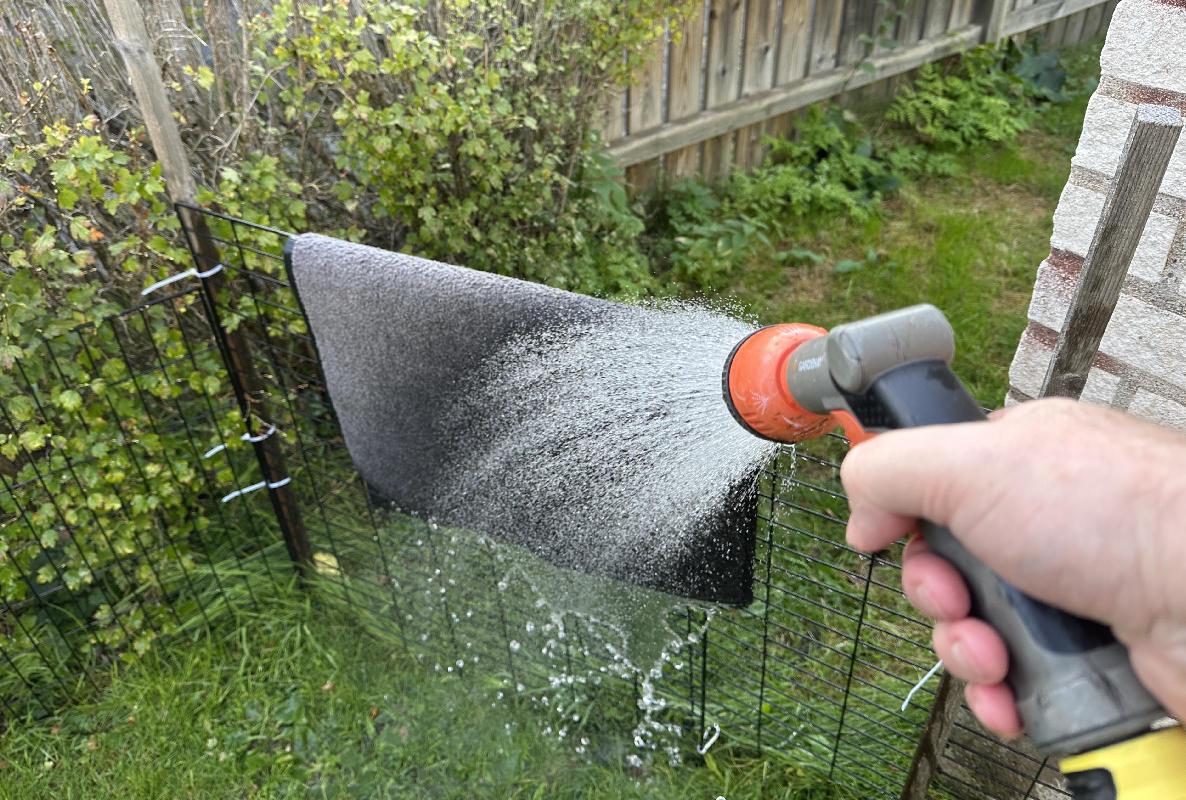
Compilers and Interpreters
for Dataingenjörsprogrammet, and others
Tuesday October 24, 2023
Exam for:
DT135G Kompilatorer och interpretatorer, provkod A001
| Aids: | No aids. |
| Score requirements: |
Maximum score is 37.
To pass, at least 22 points are required. |
| Results: | Announced no later than 15 working days after the exam. |
| Return of the exams: | Electronically through the student portal "Studenttjänster". |
| Examiner and teacher on call: | Thomas Padron-McCarthy, phone 070-73 47 013. |
A is a non-terminal, but x and y are any constructions consisting of terminals and non-terminals.A -> A x | y
The rule is replaced by the following two rules (or, more correctly, three productions), that describe the same language, but are not left recursive:
A -> y R R -> x R | empty
A is a non-terminal, but x, y and z are any constructions consisting of terminals and non-terminals.A -> x y | x z
Replace with these three productions:
A -> x R R -> y | z
a = b;
c = d * e * f - g * (h + i);
while (j < k + l + m) {
if (n < o) {
p = q + r * s;
}
else {
t = u + v;
}
w = x;
}
y = z;
Translate the program segment to two of the following three types of representations. (Should you answer with all three, the one with the highest points will be discarded.)
a) an abstract syntax tree (by drawing it)
b) postfix code for a stack machine
c) three-address code
Note: Two of the three types, not all three.
In which phase of the compiler, or at which other times, are the following errors detected?
| Program | Error |
|---|---|
a = b;
c = d * e * f - g * h + i);
while (j < k + l + m) {
while (n < o) {
p = q + r $ s;
}
else {
t = u + v;
}
w = x;
}
y = z;
|
variable "a" is set but not used unexpected end parenthesis unknown operator "$" "else" without a previous "if" variable "x" undeclared |
We try to create a grammar for the language, with the following result. The start symbol is S, which represents a complete expression.
S -> S * T | T
T -> T ^ U | U
U -> U + number | number
a) Given this grammar, what is the precedence of the three operators?
b) Given this grammar, what is the associativity of the three operators?
c) Using the normal rules for precedence and associativity,
the expression
12 + 13 * 14 ^ 15 * 16
would be interpreted as 12 + ((13 * (14 ^ 15)) * 16),
or, as a syntax tree:

Draw the syntax tree for this expression when parsed using the grammar above!

Unfortunately, for a while we have to wash our carpets a lot:


To keep track of our carpets, and when we have washed them, we design a program with a special input language. Here is an example of how this input language will look:
carpet 1 1.2; carpet 2 2; cleaned carpet 1 on 2023-10-23; carpet 3 0.6; cleaned carpet 2 on 2023-10-23; cleaned carpet 1 on 2023-10-24; carpet 4 1.2 * 2.0; carpet 5 1.2 * 5; done; |
As we can se, there are three commands that can be given: carpet, which defines a carpet with a number and an area, cleaned, which says that we have cleaned a certain carpet on a certain day, and done, which signals the end of the input.
The area of a carpet can be given as a single number, with or without decimals, or as a simple expression using the length and width of the carpet, as shown in the example above.
It should be possible to write the input in free format, so the following input should be equivalent to the one above:
carpet 1 1.2 ; carpet 2 2 ; cleaned carpet 1 on 2023-10-23 ; carpet 3 0.6 ; cleaned carpet 2 on 2023-10-23 ; cleaned carpet 1 on 2023-10-24 ; carpet 4 1.2 * 2.0 ; carpet 5 1.2 * 5 ; done ; |
b) (2p) Out of these terminals, some will not have fixed lexemes. Write regular expressions for each such terminal.
carpet 17 3.0; carpet 18 3 * 4; done; |